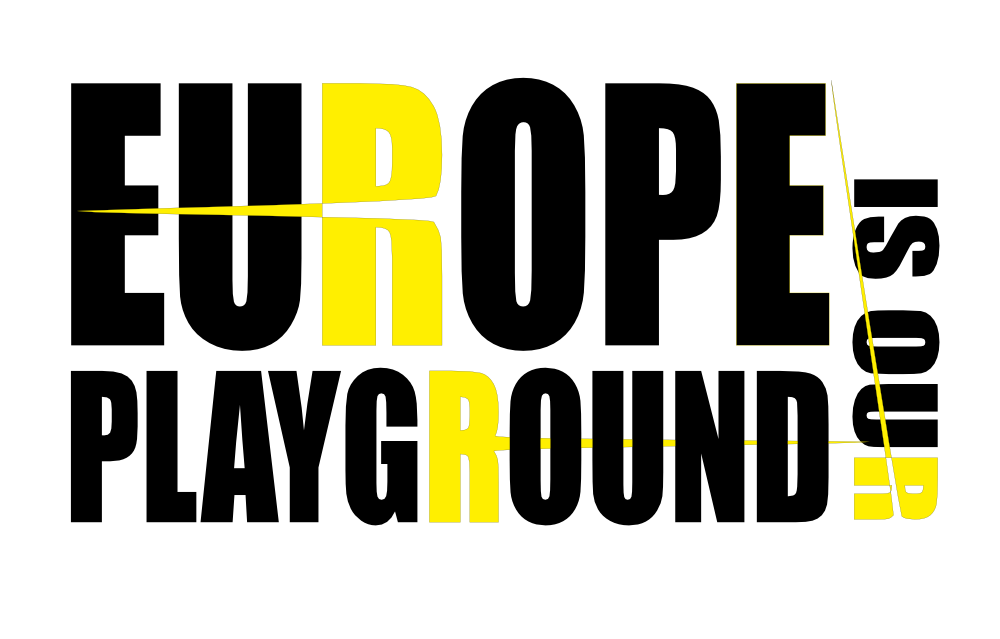A Short Guide to Chamonix
Chamonix is a cute little town in the Haute-Savoie region of France. It’s surrounded by vast snow-capped and jagged mountains, rising high in and out of deep blue skies. Most people visit Chamonix for the skiing, and good thing too as the slopes around Mt. Blanc are reportedly some of the best in Europe. But we visited recently to explore the town proper and take a look out over Europe from the Aiguille du Midi (take a peak at our photos from Europe’s summit here). If your visiting Chamonix and the Haute-Savoie for the first time – take a look at our food and drink suggestions below.
Chamonix Guide
The history of the town can be traced back to 1741, when two young English aristocrats, William Windham and Richard Pocock, discovered the Priory of Chamouni and recited tales of their adventures around the mountain village and the Mer de Glace to all back home, resulting in an influx of wealthy (mostly English) tourists….. Well nothing much has changed. The town, at its busiest, still feels almost overrun by tourists… Most of which appear to be British.
The town itself has a a good selection of architecture – both traditional and modern – with baroque churches, protestant chapels, art deco hotels, colossal villas and typical wintery European chalets lining almost every street. The problem though, is that this town was built on tourism, not a bad thing by any measure, but it gives the streets a certain feel that I’m sure many people are familiar with – a little like a mall only everyone’s wearing uniform skiwear and rushing past with skis and snowboards.
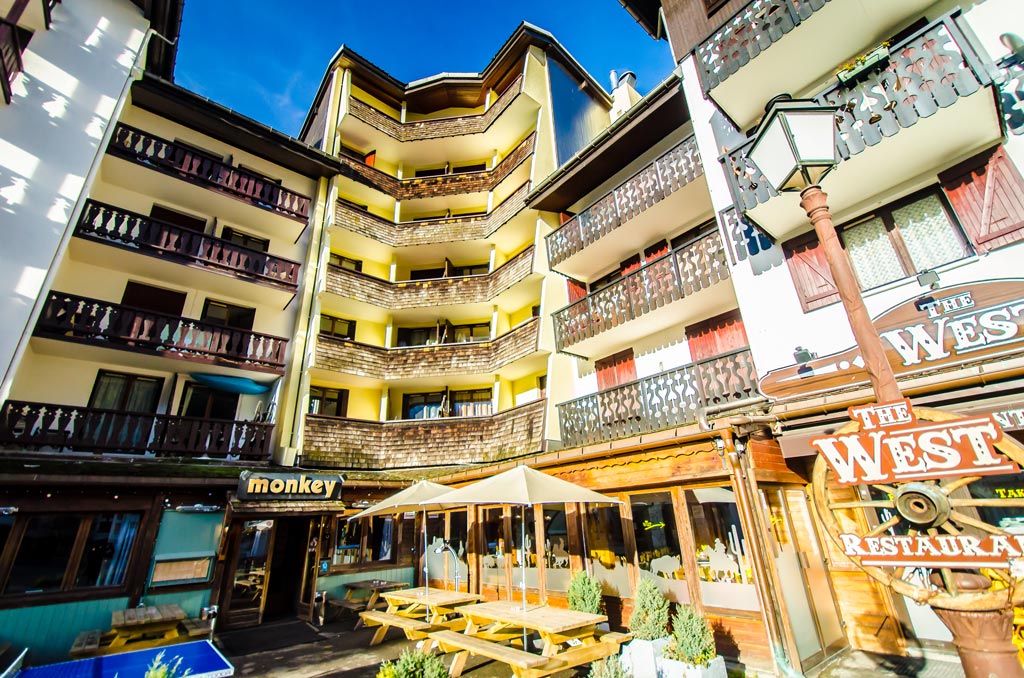
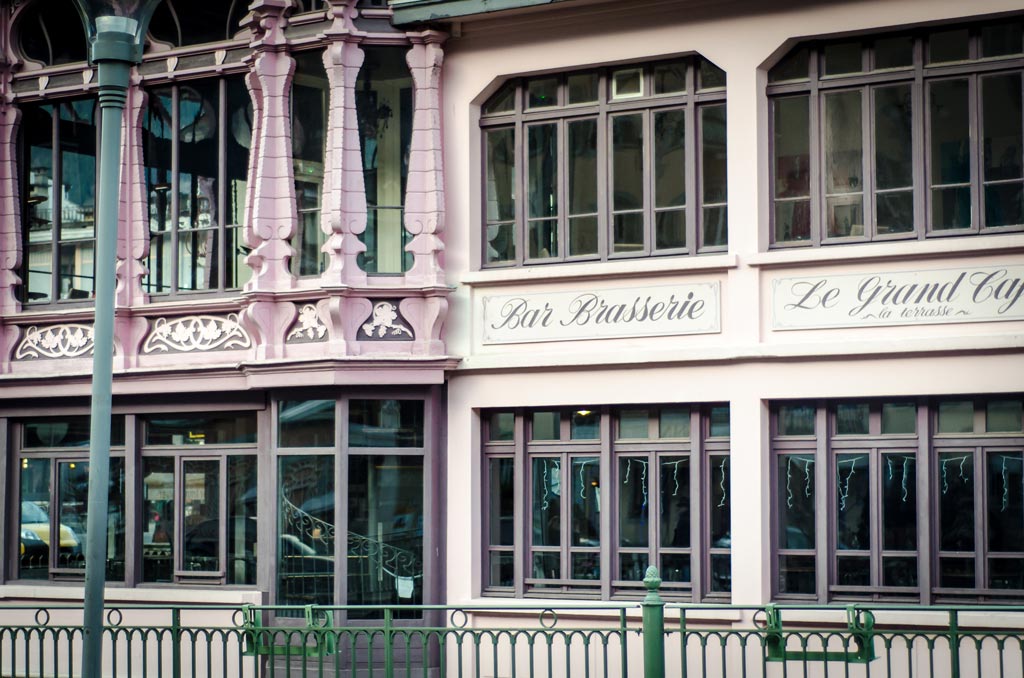
We arrived early to try and get a glimpse of the town before the masses started to pile onto the streets and sure enough, the streets were all but empty until well after 12. Chamonix isn’t all that big really, and if you’re just strolling around the old streets, taking a look at the occasional church and such, then you can easily get around most of it in a day. Though as it gets fuller most of what you’ll see becomes something of a blend of neons and dark woods – think skiwear and chalets. Don’t get me wrong it’s not at all an ugly or bad town to visit. It’s pretty and even beautiful in places, especially the mountains, but the sheer number of people and the advertising hanging from every other window really works to remind you that you are walking the, albeit historic, streets of a resort town – and I’m jut not a fan of resorts.
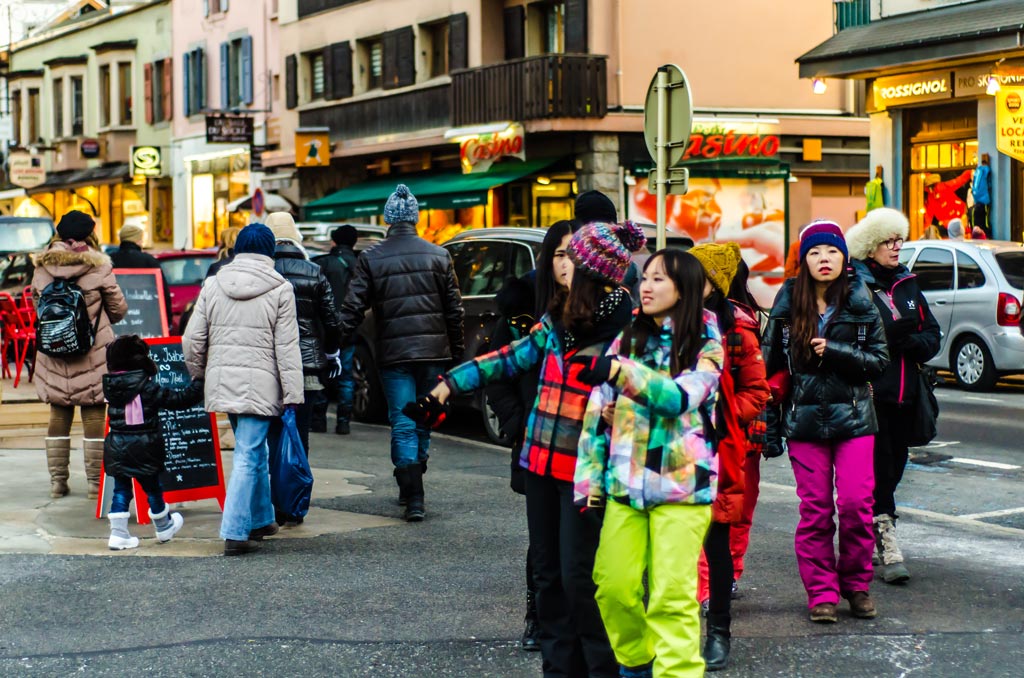
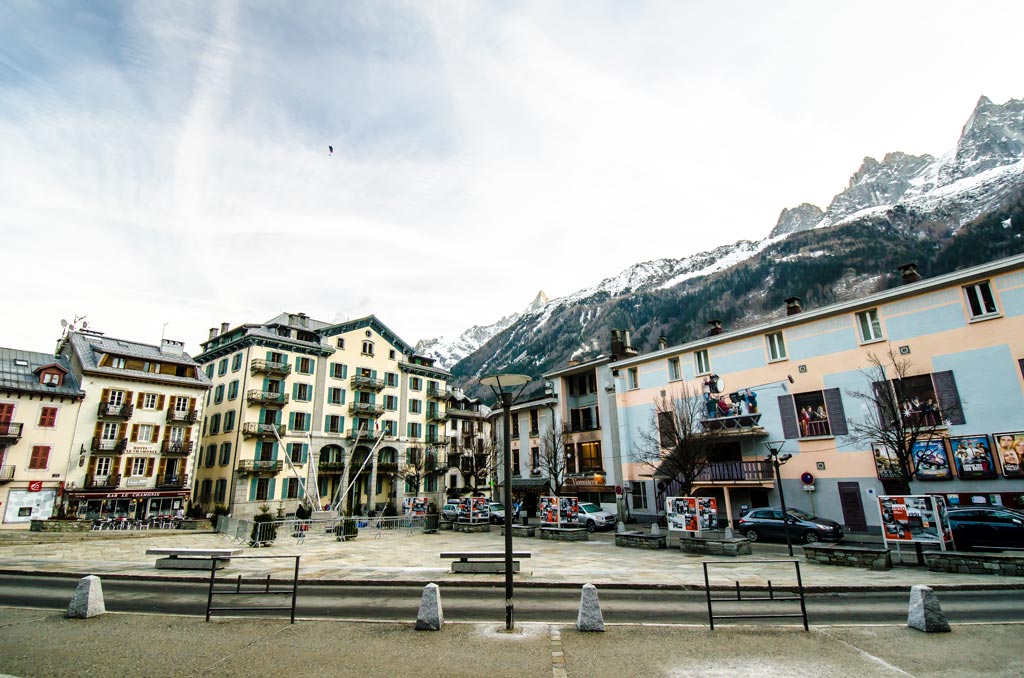
Our visit coincided with the end of Christmas and so the streets were still a bit Christmasy, with trees and carolling in the town centre – performed entirely in English by mostly English and a few very enthusiastic Asian tourists. In-fact I would go so far to say that Christmas is actually the best time to visit (for those not intending to ski) as the streets are jolly and many of the decorations are pretty and lend a lovely atmosphere to the streets
As mentioned, the streets in the busy winter period are full of people perusing the various ski-wear shops, drinking hot wine and downing mouthful after mouthful of fondue. Dogs are a popular companion (as with most of the Savoie region) – especially little cute white Bichon Frises and similar, so take your dog if you have one.
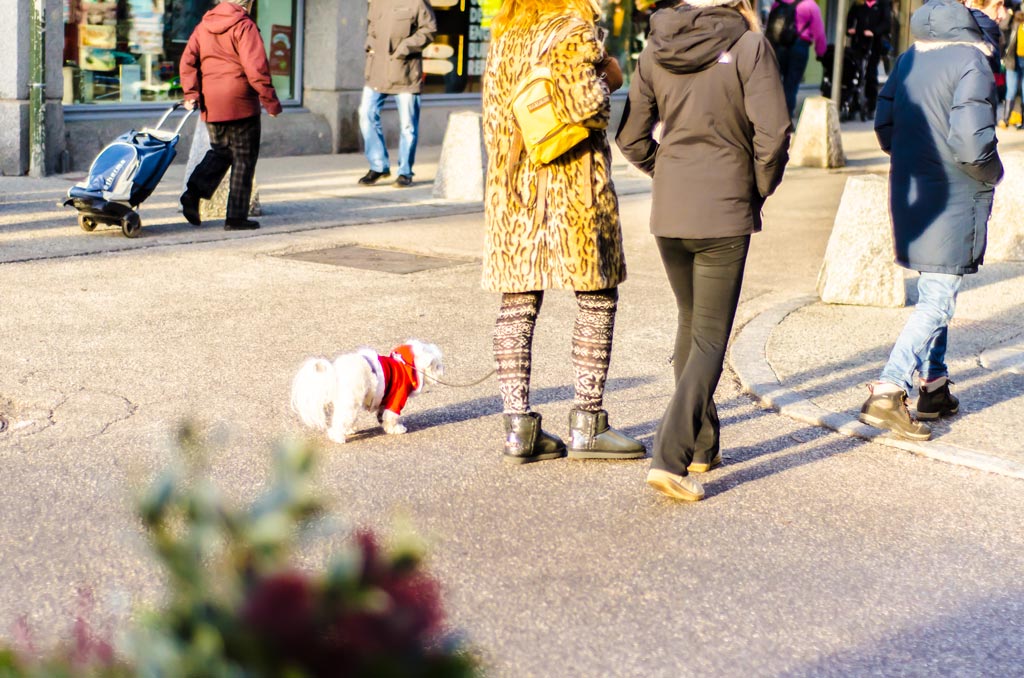
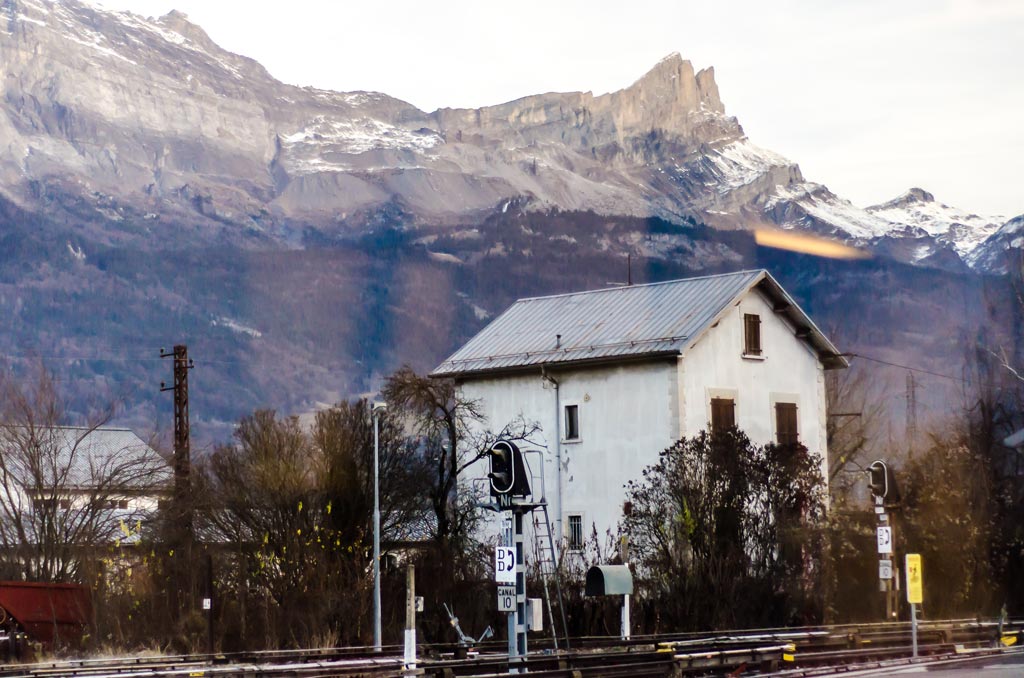
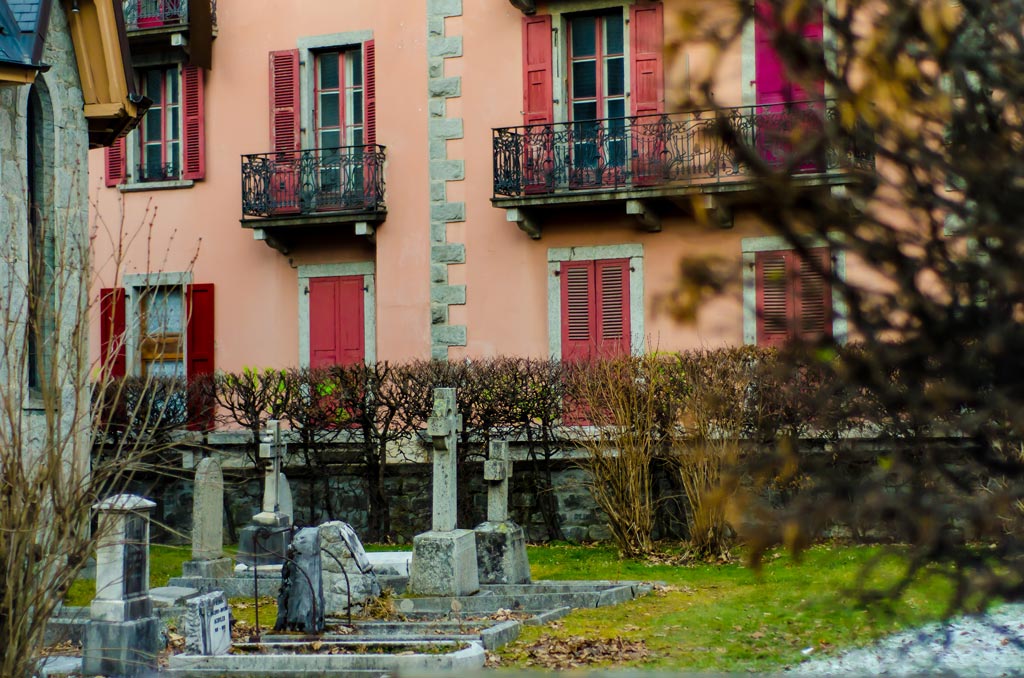
How To Get To Chamonix
We arrived by train from Saint-Gervais-les-Bains so it was a relatively easy trip, taking the mountain train which creeps up through a beautiful selection of alpine villages and through some stark scenery of roads gripping to the sides of mountains and waterfalls streaming with a glass like shimmer from unknown hollow rock. It takes around an hour from Saint-Gervais-les-Bains. If you make the journey from nearby Annecy then expect a scenic train ride that takes approx 2 hours directly from the Gare d’Annecy.
Where to Eat in Chamonix
There are a few nice bars around the main part of town, some with heated outdoor areas. On our visit we chose la Moraine, which has a typical Savoie menu and a lovely outdoor area. The restruant is known for its music selection which cycles through the eras of rock and roll: 50’s through modern. We stopped here for a quick lunch and a hot drink in the form a mix of hot Génepi and coffee drank from a Grolle (images below) – which is better than it sounds – though a tad bitter. there are plenty of places for breakfast and lunch in and around the Place du Triangle de l’Amitié.

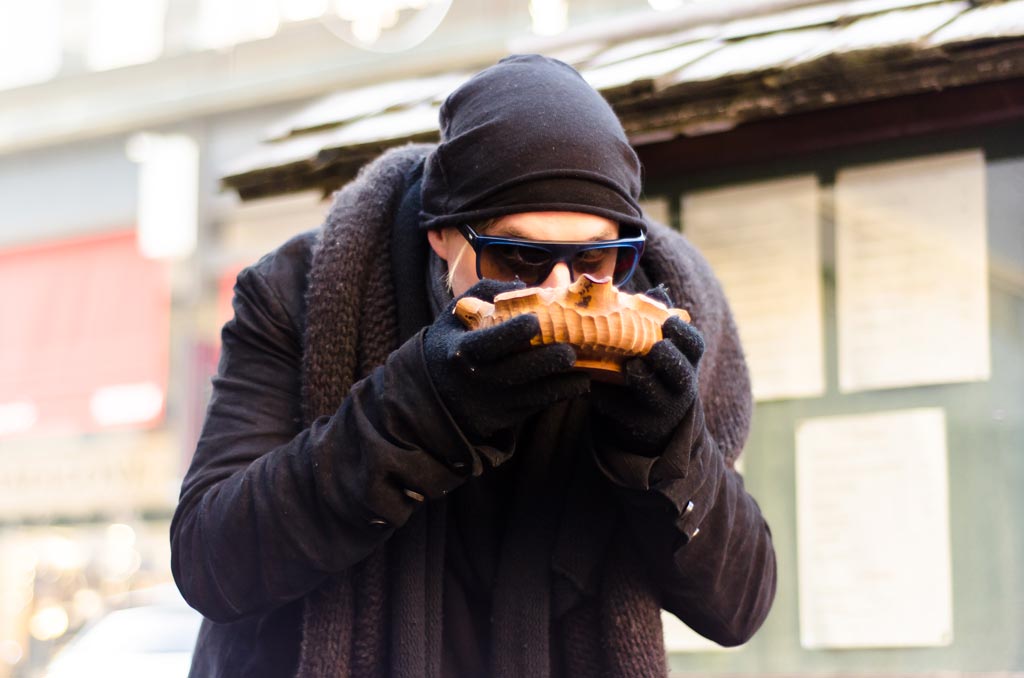
What To Eat And Drink In Chamonix & The Savoie
If you’re unfamiliar with the region and are only visiting Chamonix on your trip then let me suggest a few bits and pieces that I think that anyone visiting the Haute-Savoie should try. The food served in Chamonix is typical mountain fare, with delicious melted cheeses and fresh seafood being some of the the most popular options. Throughout the winter the drinks are mostly served hot: think Vin Chaud and medlies of coffee and Génepi drank out of a Grolle.
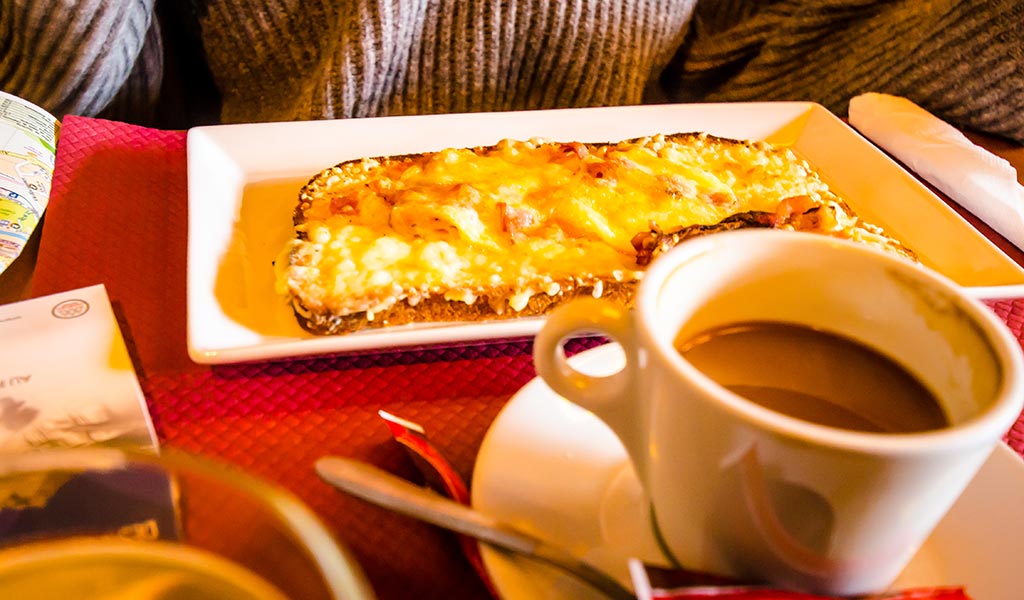
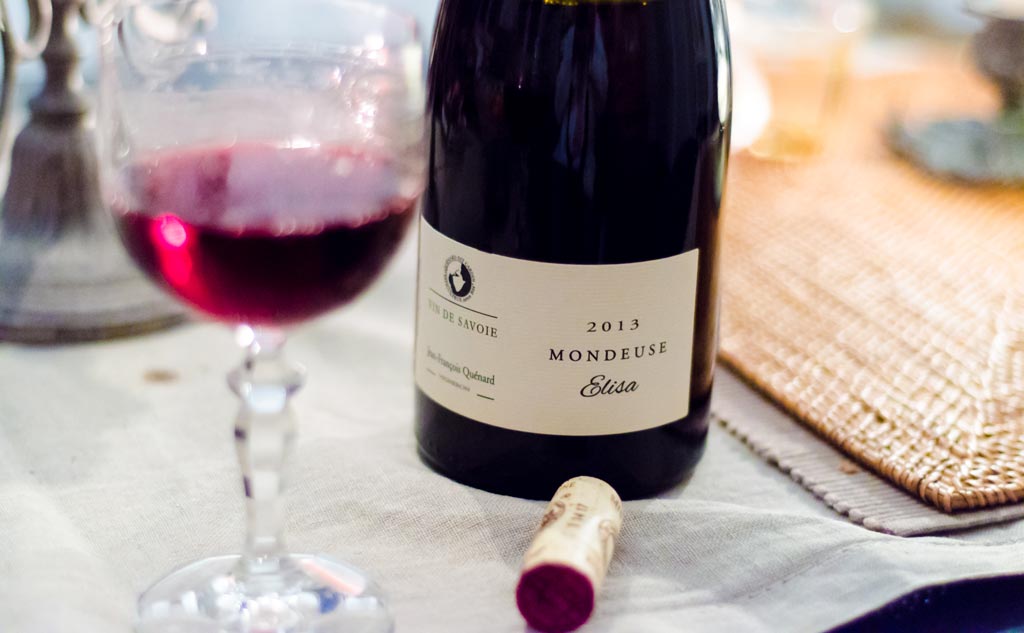
Savoie Wines & Drinks
The Savoie region is well known for their delicate white wines with floral aromas and dry, light, crisp flavours and low alcohol levels of 11-11.5%. The most famed of which still have yet to break it big in other parts of the world. Support the local productions on your visit!
Roussette de Savoie (White)
Roussette is a Savoie speciality. The wines are lively, crisp and nicely scented. It has its own appellation in four communes, most notably Frangy – incidentally I recently had a beautiful Rousette de Savoie from a small Frangy producer – Vincent Courlet – I suggest you try one if you can lay your hands on one. Roussette generally pairs well with local cheeses and warm dishes such as fondues and Raclette.
Mondeuse (Red)
Though reds aren’t as popular in the Savoie, the Mondeuse is an exception. Mondeuse wines are deep in colour, tannic, with aromas of spice (some can be very spicy), white pepper and dark fruit. Good pairings generally include meats, cheeses and dark chocolate.
Grolle
A grolle is a beautifully carved bowl, known as a coupe de l’amitie (cup of friendship), that has numerous drinking spouts for sharing. According to custom, the bowl shouldn’t be put down on the table until it is empty. The steamy hot drink inside is usually either a mix of Coffee and Génépi or coffee and eau de vie.
Local Savoie Food
Diot au Vin Blanc
The Savoie region is resplendent with fantastic food, my favourite of which is undoubtedly the wonderful Diot au Vin Blanc (sausages in white wine sauce) which is uually eaten alongside a goey cheese and potato gratin. Diot’s are more popular in places like Annecy, but they’re available throughout the Savoie region.
Raclette
Possibly one of the worlds most delicious dishes. Raclette comes from the French word racler, which means “to scrape” and that’s what you’ll be doing. Basically thick slices of, or a whole quarter of (if you have the correct equipment) raclette cheese is toasted at high temperature. When the cheese starts to bubble and brown, you simply scrape it off onto your plate of boiled potatoes, cured meats and cornichons. Divine.
Tartiflette
This beautiful dish is made from potatoes and a mixture of cheeses. Always Reblochon cheese and sometimes Gruyere and others, as well as pieces of bacon, cream and white wine. Ingredients are baked together to make what becomes something of a grown up gratin dauphinois, creamy and cheesy, hot and salty, dripping with cheese and flaked with flavourful lardons of bacon.
If you’re in Chamonix for the Winter then I suggest making the journey to the Annecy Christmas Market for what is one of the best in the region, with huge pans filled with Savoie sausage, the scents of melting cheese, lightshows and a beautiful location in the old town of Annecy.


